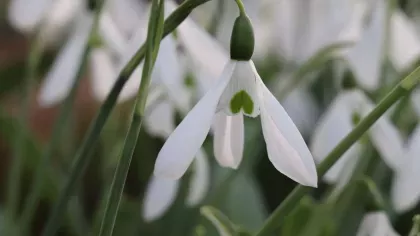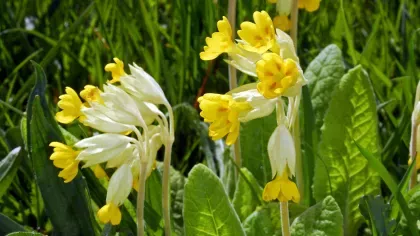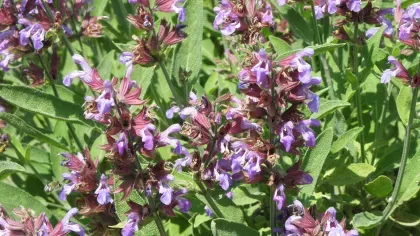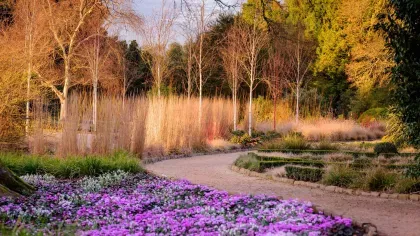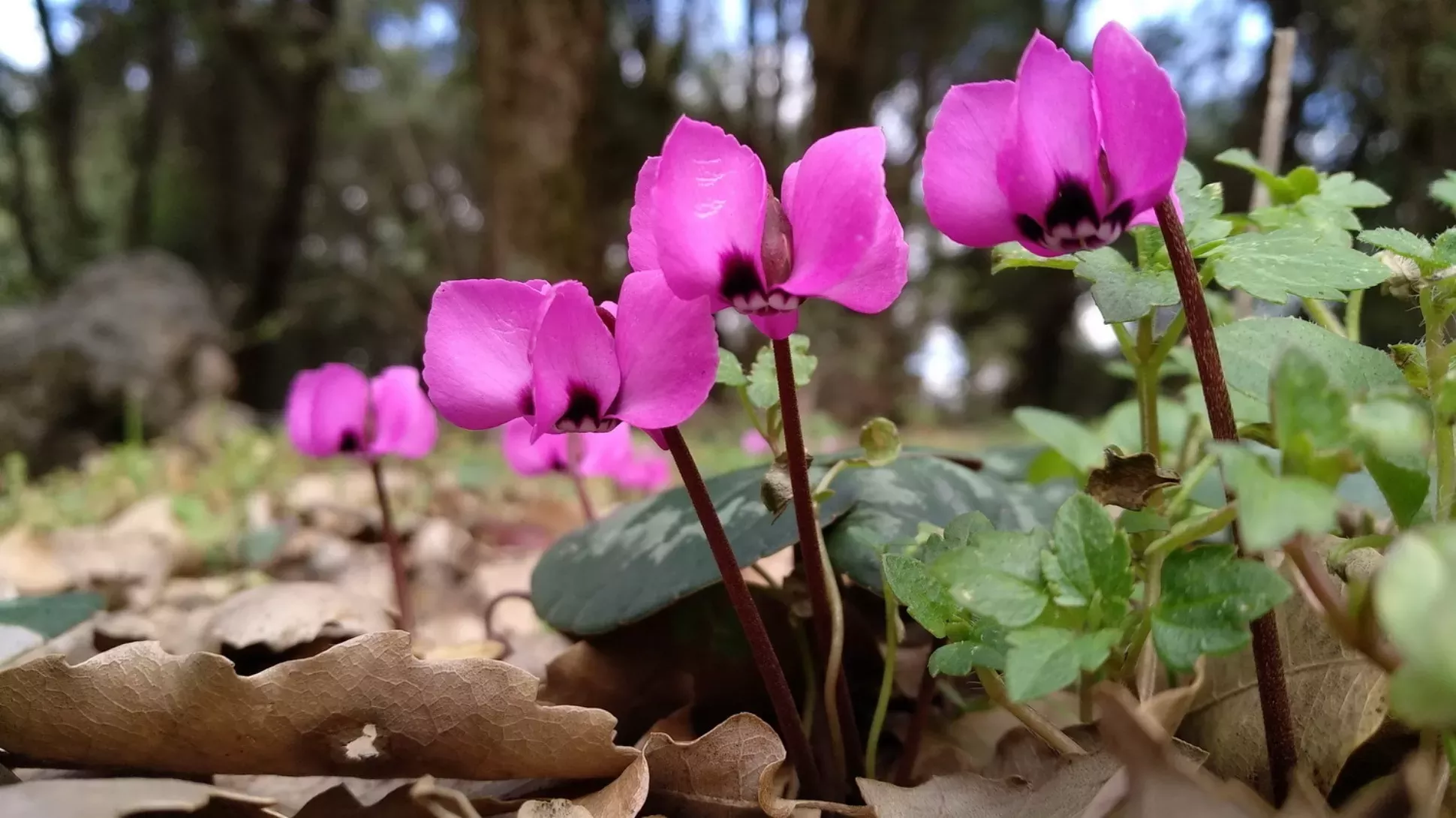
Cyclamen
On this page
Bringing a splash of colour to autumn, winter and spring, the cyclamen is a gardener's favourite.
It's hard to miss their characteristic white, pink and purple flowers in the wild, growing on verges and in woodlands during the colder months.
There are 23 different species of cyclamen (as well as numerous cultivars), including C. persicum, C. hederfolium and C. coum.
In some parts of Europe, cyclamens have the common name ‘sow bread’, as pigs would root up the tubers for food.
Plant description
Cyclamens are perennial plants that grow around 13cm tall. The leaves can be round, oval or heart-shaped, with green and silver patterns on the upper side, and green or red colouring on the lower side. The flowers can be purple to pink to white, have five petals that connect at the base in a cup, and grow facing downwards on long dark flower stalks. If pollinated, the flower turns into a capsule that splits open when it matures. The seeds are sugary and attract foraging insects that distribute them away from the parent plant. The plant grows from a small tuber, between 2 to 24cm across.
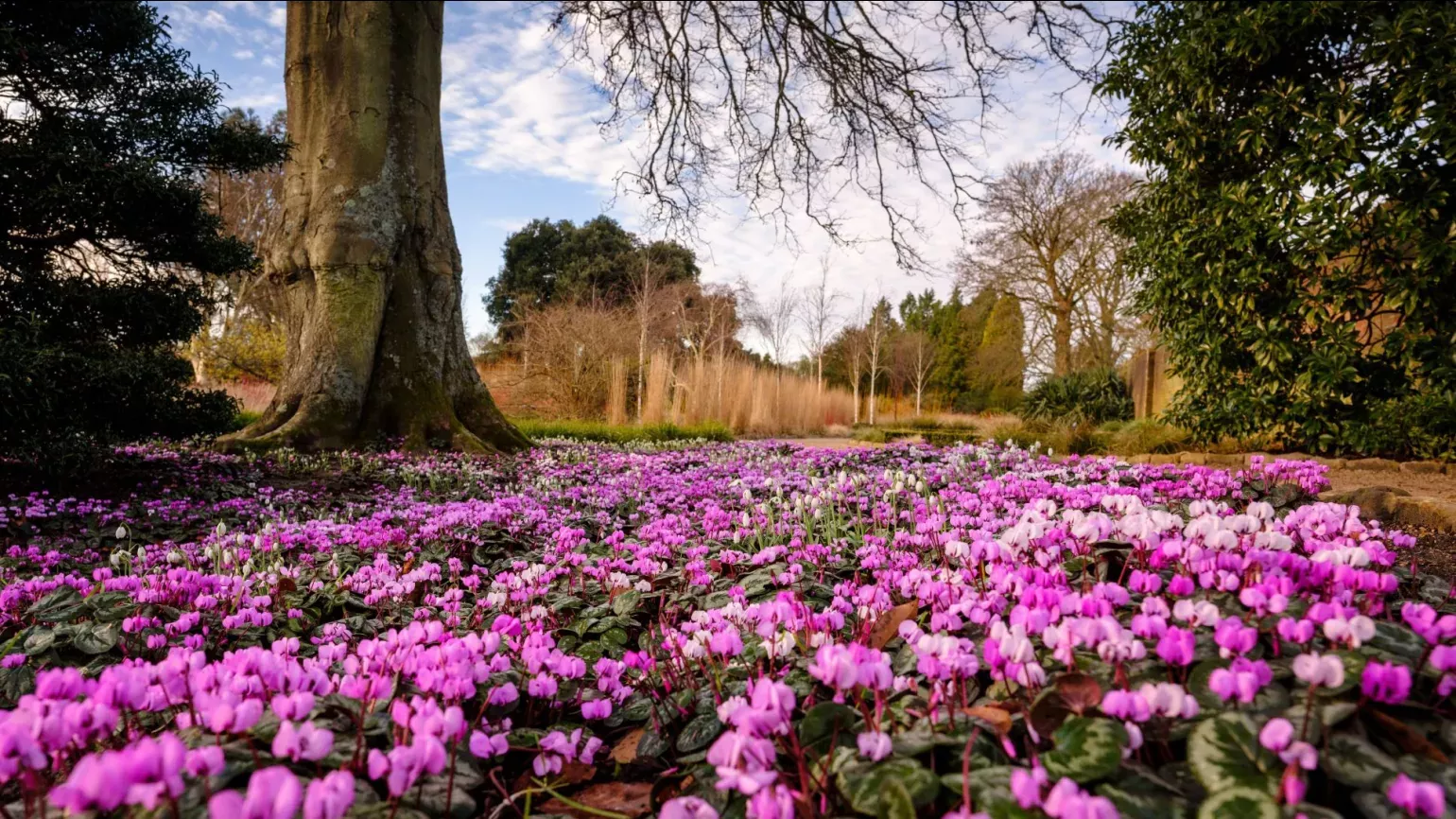
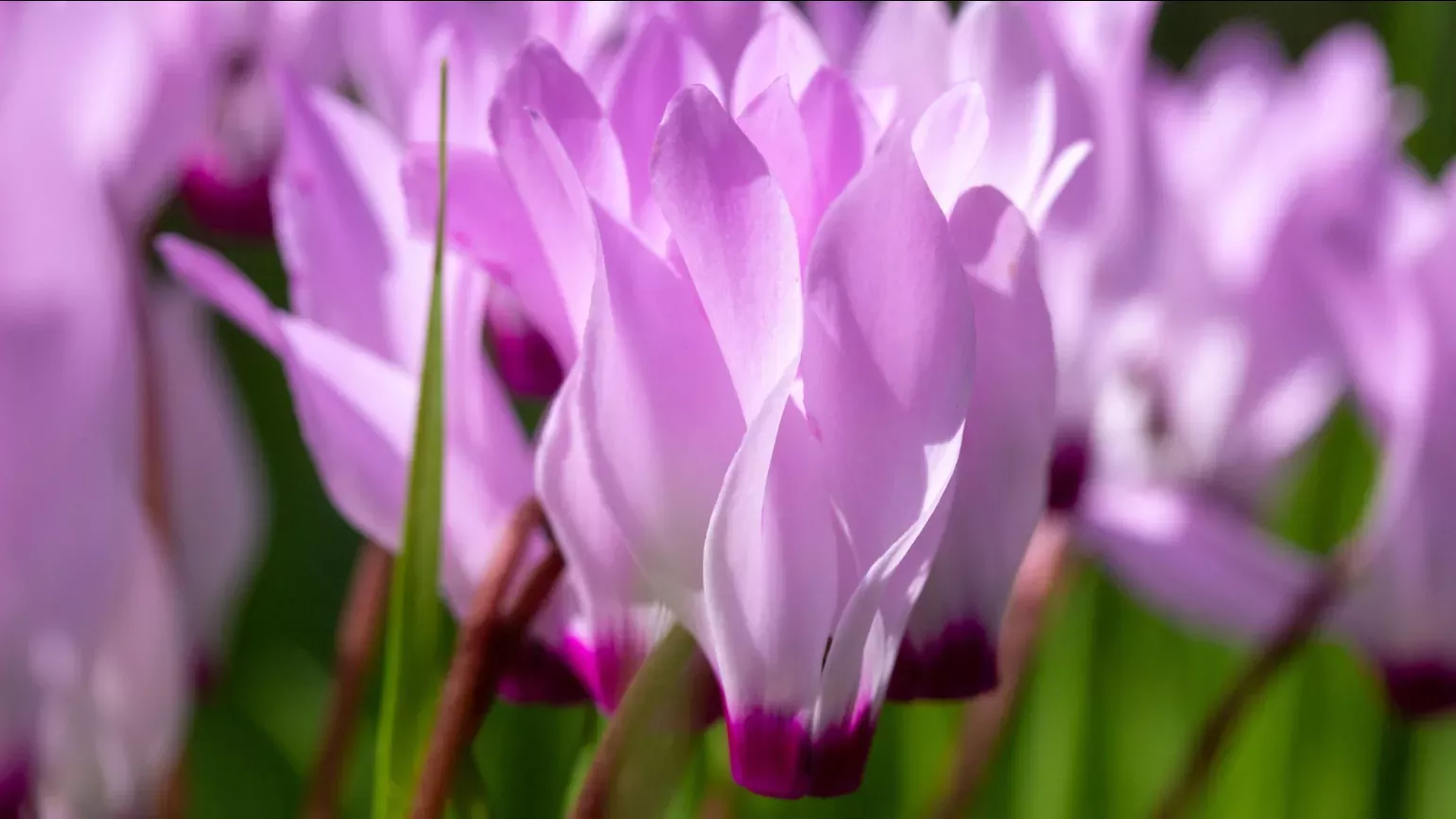
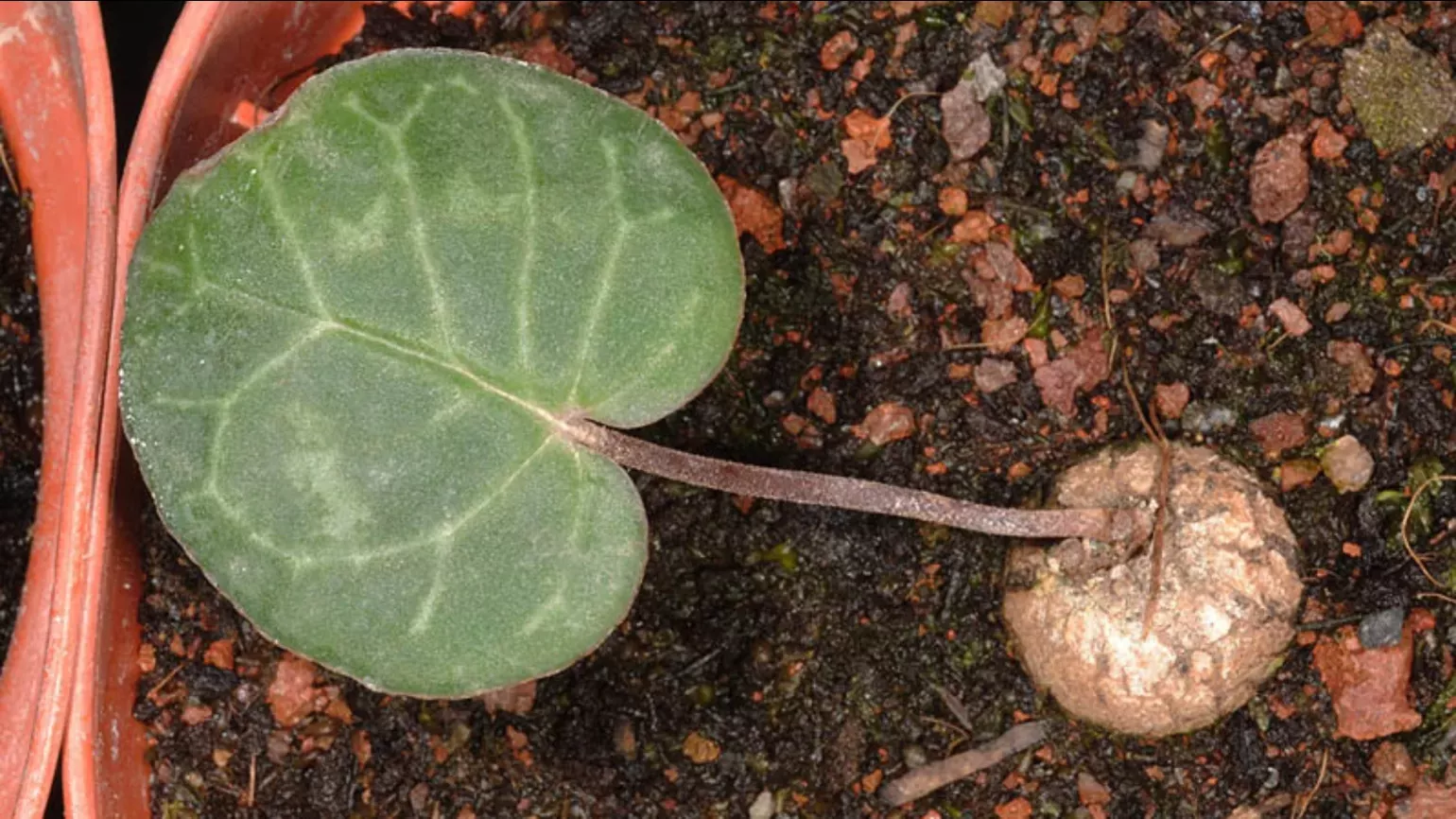
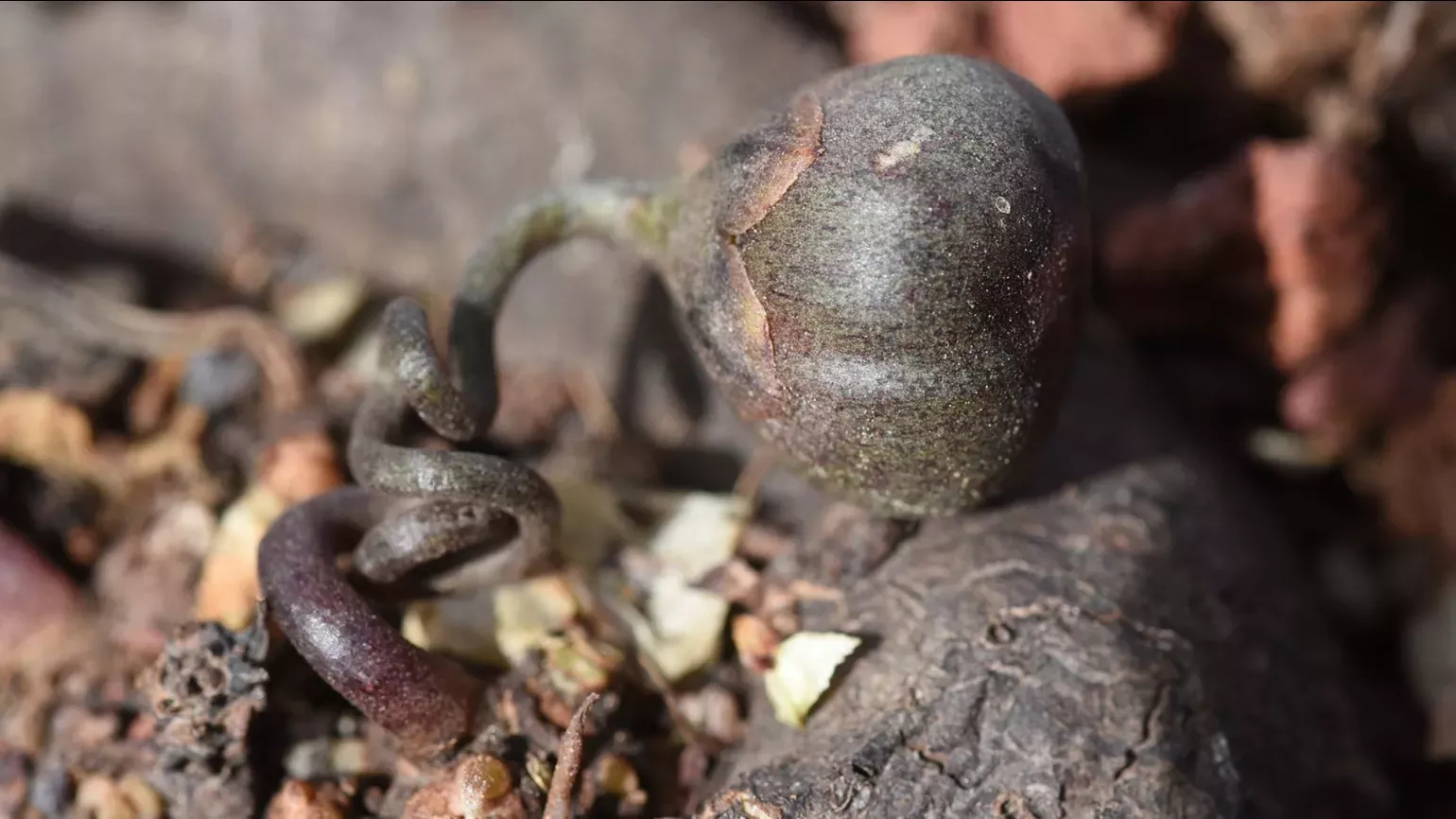
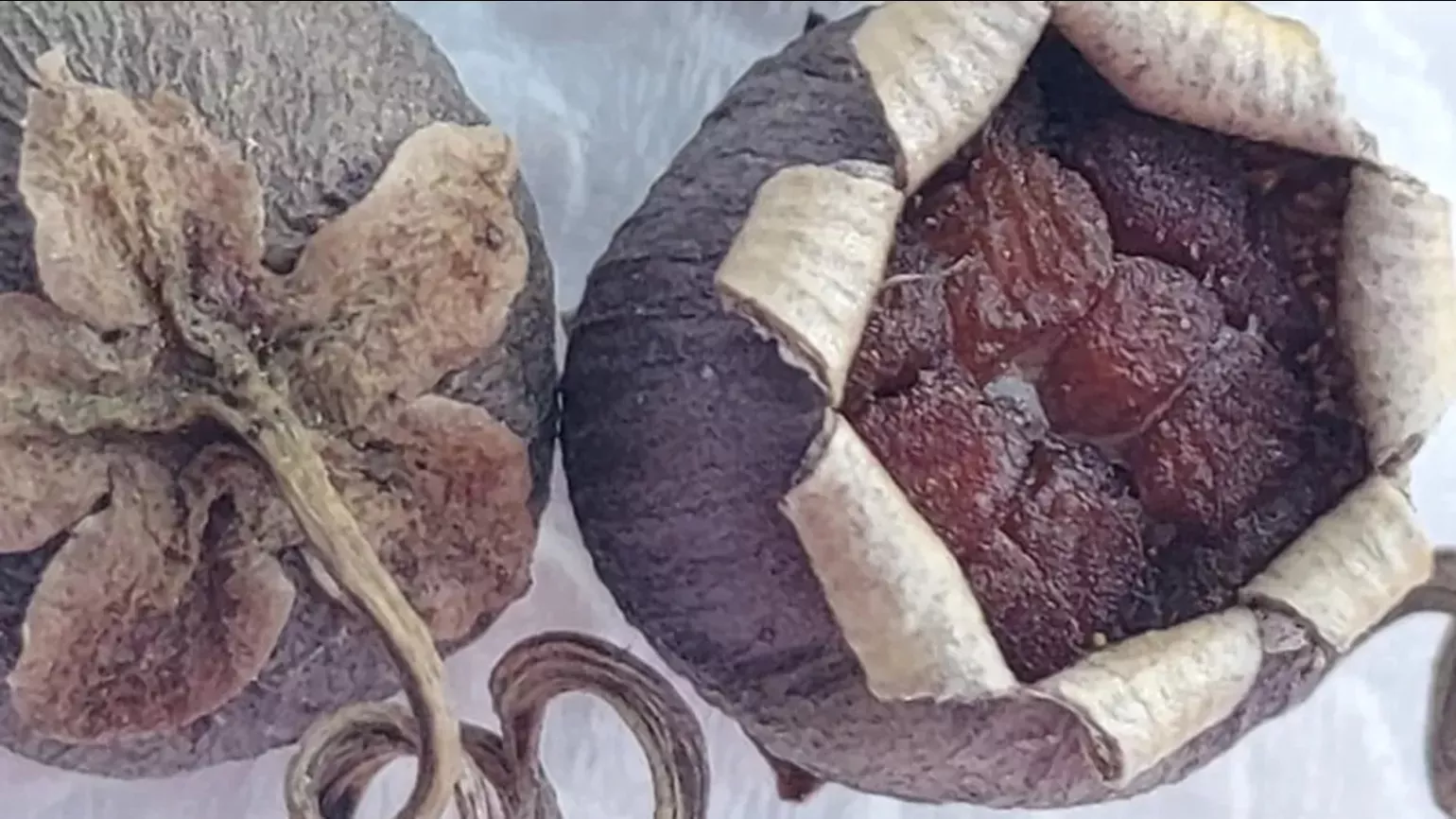
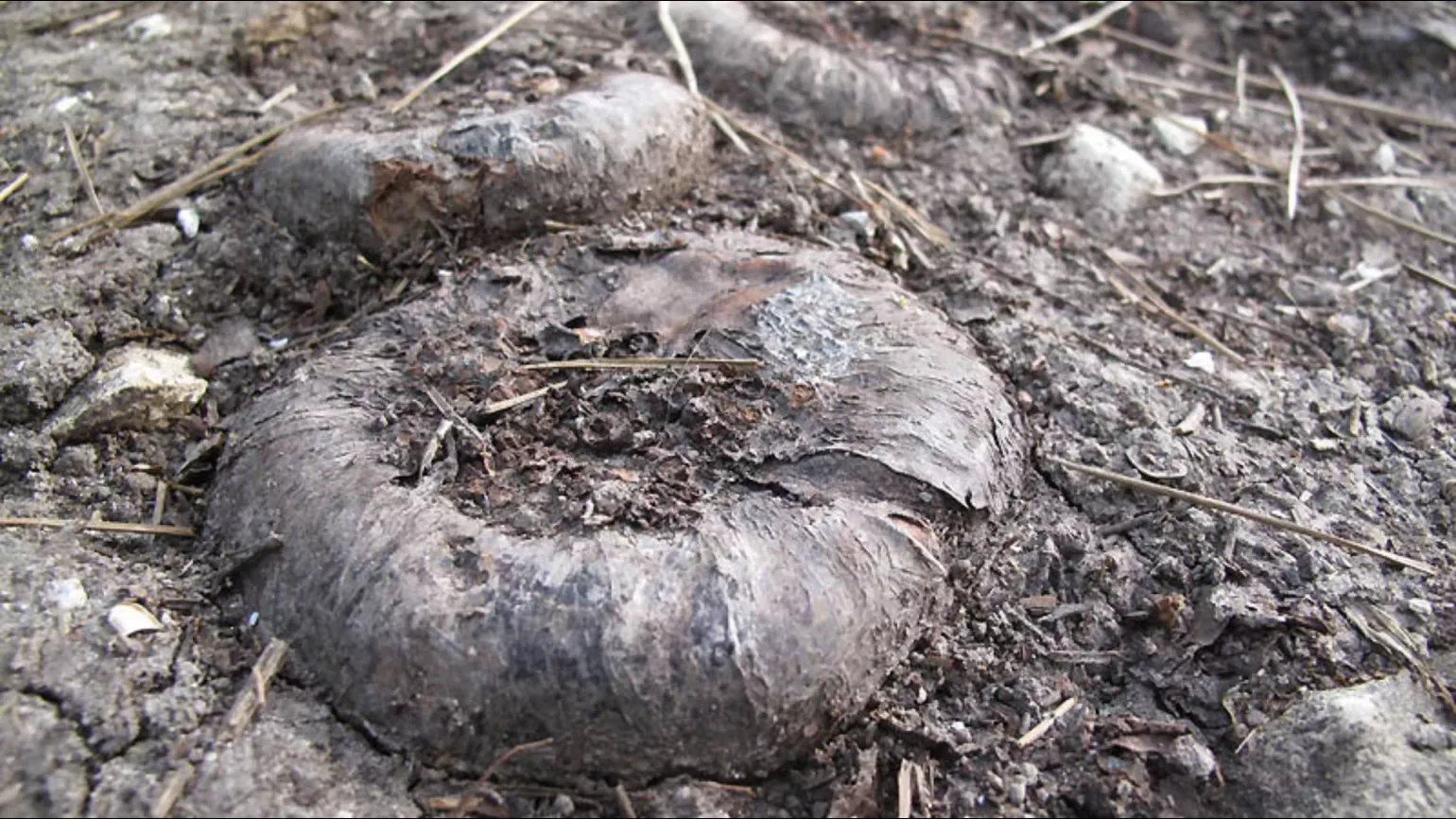
Plant uses
Cultural
Cyclamen are popular ornamental plants, especially during winter.
In the past, cyclamens were linked to love, sex and fertility, and used in traditional love potions across Europe.
Did you know?
The name ‘cyclamen’ comes from the Greek kyklos, meaning circle, which refers to the circular tuber the plants grow from.
Spring-flowering species of cyclamen include C. repandum, C. cyprium and C. balearicum. Winter-flowering species include C. coum and C. alpinum. Autumn-flowering species include C. africanum, C. graecum, C. rohlfsianum and C. herderifolium.
Where in the world?
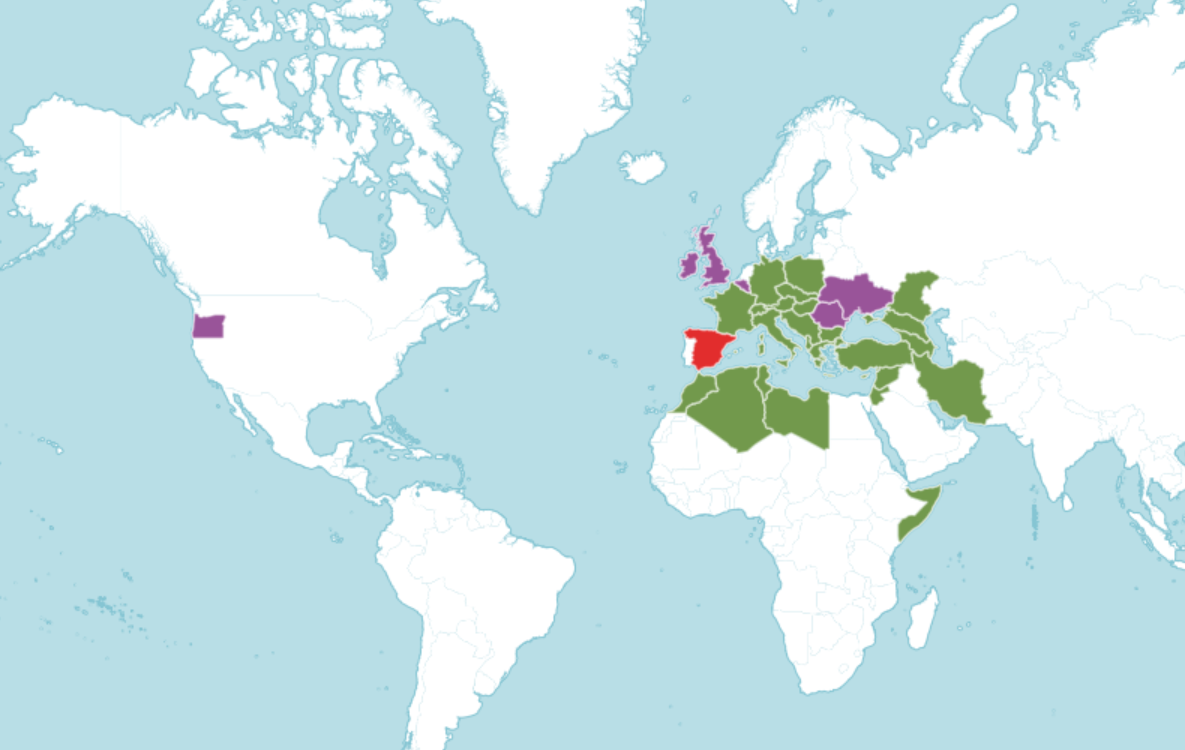
Woodlands and grasslands in temperate and cold regions.
Find it in our gardens
Kew Gardens
A botanic garden in southwest London with the world’s most diverse living plant collection.
Location
View map of Kew GardensBest time to see
Wakehurst
Kew’s wild botanic garden in Sussex that has over 500 acres of plants from around the world and is home to the Millennium Seed Bank.
